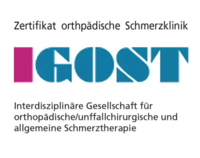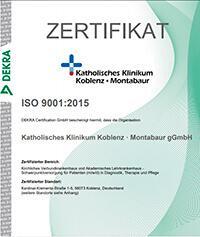Hip Replacement for Hip Osteoarthritis (coxarthrosis)
Treatment prices are regulated by national law of the corresponding countries, but can also include additional hospital coefficients. In order to receive the individual cost calculation, please send us the request and medical records.
Treatment of Hip osteoarthritis (coxarthrosis)
- Diagnostics
- Arthroscopic surgery
- Diagnosis and conservative treatment
- Hip replacement and rehabilitation
- Endoprosthesis replacement in coxarthrosis
- Endoprosthesis replacement in coxarthrosis with rehabilitation
- Treatment with autologous conditioned plasma (ACP)
- Bilateral hip replacement
- Bilateral hip replacement and rehabilitation
- Autologous chondrocyte implantation (ACI)
- Orthopedic rehabilitation

Department of Adult and Pediatric Orthopedics, Traumatology
The Department of Adult and Pediatric Orthopedics, Traumatology is part of the specialized Center for Musculoskeletal Disorders, whose medical team consists of highly qualified orthopedists, traumatologists, and spinal surgeons. The department offers modern diagnostics and treatment of the entire range of musculoskeletal diseases. The department's field of competence includes the treatment of injuries of varying severity. The therapeutic options cover both conservative measures and surgical interventions, which are mainly performed using sparing minimally invasive techniques. The treatment concept is based on the comprehensive approach – from the use of conservative methods to physiotherapeutic procedures the day after surgery.






Department of Adult and Pediatric Orthopedics, Traumatology, Foot Surgery
According to the prestigious Focus magazine, the Department of Adult and Pediatric Orthopedics, Traumatology, Foot Surgery ranks among the top German medical facilities specializing in hip surgery! The department offers the full range of high-precision diagnostics and conservative and surgical treatment for diseases of bones, joints, muscles, ligaments, and tendons. One of the department's key areas of clinical practice is large joint arthroplasty. In this area, the department is awarded the prestigious endoCert certificate. The doctors in the department's operating rooms successfully perform knee, hip, and shoulder replacement surgery. Whenever possible, preference is given to minimally invasive joint replacement surgery. An important part of the work of the department's doctors is the treatment of orthopedic diseases and musculoskeletal injuries in children. The specialists at the medical facility also have long experience in helping patients with foot pathologies and deformities, including hallux valgus, hallux rigidus, hammer toes and claw toes, metatarsalgia, etc. The department's doctors have in their arsenal state-of-the-art equipment and modern treatment methods that allow for the achievement of excellent therapeutic results. More than 3,500 inpatients and about 17,000 outpatients are treated at the medical facility every year.




Department of Orthopedics, Traumatology, Spinal Surgery and Foot Surgery
According to the Focus magazine, the Department of Orthopedics, Traumatology, Spinal Surgery and Foot Surgery ranks among the top German medical facilities in treating orthopedic diseases and spinal surgery! The department carries out comprehensive examinations and effectively treats musculoskeletal diseases and injuries. The department has about 130 beds for its patient hospitalization. Doctors annually admit more than 4,000 patients for inpatient treatment. Several thousand surgical interventions of varying complexity are performed on the basis of the medical facility annually. The department offers the services of the certified Maximum Care Joint Replacement Surgery Center (EPZmax) and the certified Trauma Center. In addition, the department's specialists have vast experience in treating spinal and foot pathologies. The main goal of the department's doctors is to restore mobility and eliminate pain. The specialists always prefer an individual approach to each patient and his clinical case.






Coxarthrosis (arthrosis, arthritis, osteoarthrosis, osteoarthritis) is a degenerative lesion of the hip joint. In most cases, this is age-related wear out. Less commonly, joint degeneration can be caused by trauma or dysplasia (congenital underdevelopment). So far, medicine cannot offer reliable methods on how to restore the patient's own joint. Therefore, the main treatment for severe arthritis is hip replacement. You can undergo this operation abroad, in one of the best orthopedic clinics in the world. Booking Health will find the most suitable hospital and organize your trip.
Content
- Who may need hip replacement for coxarthrosis?
- What types of endoprosthetics can be performed?
- What types of endoprostheses can be used?
- Preparation for surgery
- How is the surgery performed?
- After surgery
- Revision hip replacement
- Surgery outcomes
- Treatment in European hospitals with Booking Health
Who may need hip replacement for coxarthrosis?
Hip osteoarthritis always progresses. In different patients, this occurs faster or slower, but the outcome of the pathology is the same: the formation of ankylosis, namely, a completely immobile joint.
The symptoms become more severe at the stage 3-4, so there is a need for hip replacement. Patients suffer from chronic pain that cannot be controlled with conservative therapy. One limb becomes shorter than the other one, which not only interferes with walking, but also badly affects the spine and other joints of the lower limb, primarily the knee.
Disability and chronic pain are the main reasons why patients decide to undergo hip replacement. This operation is recognized as the best in the world in terms of improving the quality of life. In the vast majority of cases, it helps achieve a successful outcome.
Hip replacement is the most common orthopedic surgery. In developed countries, tens of thousands of such interventions are performed every year. Coxarthrosis is the most common indication for hip replacement. Less commonly, such operations are performed for joint inflammation, dysplasia, hip fracture, avascular necrosis of the femoral head.
Cost of hip replacement surgery is from €11,783. You can find prices for other therapeutic options and hip rehabilitation on the Booking Health website.
According to indications, total and partial hip replacement surgeries are used in hip coxarthrosis.
The best hospitals for surgical treatment of hip osteoarthritis in Europe are:
- University Hospital Rechts der Isar Munich
- University Hospital of Ludwig Maximilian University of Munich
- University Hospital Ulm
- University Hospital Frankfurt-am-Main
- Vitos Orthopedic Clinic Kassel
What types of endoprosthetics can be performed?
Hip replacement can be either partial or total. In the first case, the joint is only partially replaced. It consists of two components: femoral and acetabular (acetabular cup prosthesis). When performing partial replacement, doctors replace only the femoral component. However, the patients with coxarthrosis usually require a total hip replacement.
According to the number of operations performed, hip replacement can be primary or revision (repeated, secondary). In most cases, European doctors perform a single surgical procedure. The prosthesis is implanted reliably, very accurately, and therefore the risk of loosening or infection is minimal. In recent years, the quality of endoprostheses has improved: they can serve for decades without a need to be replaced. Most patients suffering from hip osteoarthritis are people over 70 years old. Therefore, the implanted artificial joint serves lifelong.
According to the method of fixing the endoprosthesis, hip replacement for arthritis can be cement and cementless. The cementless method is mostly used – the spongy component of the prosthesis gradually grows into the bone. This process is called osseointegration. Nonetheless, in case of osteoporosis, artificial prostheses do not fuse well, so they are reliably fixed with cement.
What types of endoprostheses can be used?
Endoprostheses for hip replacement consist of a femoral and pelvic component. The femoral component is a stem, which imitates a part of the femur, with a neck and head. This head is placed in the pelvic component of the prosthesis – the cup. A liner is located between them. Different components of the endoprosthesis can be made of different materials – their combination is called a sliding pair or friction joint. The liner is usually made of polyethylene.
In most cases, it is possible to select the most suitable endoprosthesis for the patient from standard sizes. In Europe, the method of computer selection is used from tens of thousands of options.
In the most complex cases of arthritis, in bone defects and significant deformation of the acetabulum, the endoprosthesis has to be made individually. It is 3D printed. Special computer programs take into account the quality and quantity of the remaining bone tissue, set the required configuration of the pelvic component of the endoprosthesis, the location of the screws, and help the specialists plan surgery.
Individual endoprostheses are the most reliable, comfortable and functional, but when using them, the cost of treatment increases. The need to use individual components of prostheses usually arises in traumatic arthritis.
Preparation for surgery
Preparation for hip replacement surgery involves undergoing tests and creation of favorable conditions for postoperative recovery.
It is advisable to prepare the body for the upcoming intervention. This will help make it more safe. A month before hip replacement, it is worth quitting smoking, as it impairs blood supply, increases the risk of infectious complications, and slows down the restoration of bones and soft tissues.
Excess weight is bad for the surgery results, as it often becomes the main cause of the development of arthritis. Overweight and obesity are determined by body mass index (BMI). To calculate it, you need to take your weight in kg and divide by your height squared (in meters). An index of up to 25 is considered normal. An index from 30 means obesity of the first degree. If the BMI is over 40 (grade 3 obesity), you may not have surgery at all.
If you have weak arms, take up sports. It is worth strengthening the muscles for several months before surgery. These muscles will bear the main load in the first 2 months after hip replacement.
You will be consulted by a rehabilitation therapist immediately before the operation. He will teach you how to use crutches or a walker in advance. You will practise walking without straining the operated limb. The doctor will teach you how to sit up, sit down and stand up correctly.
Take a shower the night before your surgery. Do not eat anything after 6 p.m., and do not drink anything after midnight.
How is the surgery performed?
The hip replacement surgery does not cause any discomfort to the patient. It is performed under general anesthesia, so there is no even minimal pain. The operation usually takes 1 to 2 hours. In complex cases, it may take longer.
The joint destroyed by arthritis is permanently removed. An artificial prosthesis is implanted in its place. The acetabulum of the pelvis is drilled out and an artificial cavity (cup) is implanted in it, which is fixed with screws or cement. On the other hand, the femoral component is placed, which becomes a continuation of the patient's own femur. If possible, the doctors use a short stem of the endoprosthesis to preserve as much of the patient's own bone tissue as possible.
Upon the completion of surgery, the doctor sutures the wound. It leaves the drains – the tubes through which blood and lymph drain. This is carried out to prevent the accumulation of fluid in the surgical area.
After surgery
Immediately after surgery, the patient stays in the Intensive Care Unit. He receives symptomatic, supportive, pain therapy. Drugs are used to reduce the risk of infectious and thromboembolic complications. The leg is in the abduction position. A roller is placed between the legs.
The activation of the patient is allowed within a day after the operation. The first bandaging is performed during this period. For two days, the intestines do not work well, so the patient has to follow a sparing diet. He can walk on the third day, but he will have to use additional support devices.
In the first days after surgery, the patient can only sleep on his back. When turning on the unoperated side, a roller should be pressed between the legs. The legs are bent at the knees and a roller is placed between the knee and ankle joints. The patient should already do exercises while lying in bed during the first days, but he should avoid sudden movements, too strong (more than 90 degrees) bending not only at the hip joint but also at the knee joint of the operated limb. Rotational movements are undesirable.
The stitches are usually removed after 2 weeks. Sometimes they do not have to be removed: the threads gradually dissolve on their own.
The patient needs to stay 1-2 weeks in the hospital. The maximum load on the operated leg is possible within one and a half to two months. The patient then needs to increase it gradually. In the first days after surgery, the affected leg is not loaded at all. After a week, the load is allowed up to 15% of the body weight, after 3 weeks – up to 50%.
In replacement surgery, methods of fast-track rehabilitation after hip replacement become more common. Trials show that it not only reduces the recovery period and hospital stay, but also reduces the risk of some complications. The method was developed in Denmark, but then became widespread in Europe and America.
According to the fast-track protocol, the patient is activated within a few hours after surgery. This is possible due to spinal anesthesia instead of general anesthesia. Upon the completion of surgical procedure, infiltration anesthesia is additionally used. In the postoperative period, low molecular weight heparins and compression hosiery are used to prevent thromboembolism, which, in addition, prolongs the effect of infiltration anesthesia. To relieve pain, nonsteroidal anti-inflammatory drugs are prescribed, and, if necessary, opiates. Physiotherapy starts the next day. Patients stay in the hospital only 5-7 days after hip replacement.
The rehabilitation period takes up to 6 months, but already 1 month after fixation with cement and 2 months after cementless fixation, the maximum load on the operated leg and walking without crutches is possible. The main methods of rehabilitation are therapeutic exercises, physiotherapy, massage. Exercises play a major role in 2-3 weeks after surgery, when soft tissues heal.
Revision hip replacement
Approximately 10-15% of patients require repeated hip replacement. This operation is technically more complex than the primary one, and often gives unfavorable functional outcomes. Prostheses for hip replacement are often more expensive, and for some patients they have to be made individually, further increasing the cost of treatment. In the best European hospitals, even a revision hip replacement is successful in most cases.
Here are the main reasons why the patient may need a revision joint replacement surgery after hip replacement:
- Infectious complications are the most common reason for early surgery. If possible, sanitizing operations can be performed to eliminate the inflammation foci, but the prosthesis can be preserved. In case of infectious complications, even several operations may be required, since a new artificial joint cannot always be implanted immediately after removing the old one.
- Loosening of the endoprosthesis. The more accurately it is implanted, the lower the risk of one or both components loosening. The risk also depends on the quality of the prosthesis and the level of physical activity of the patient.
- Dislocation of the prosthesis can be repaired. Operations are performed for irreducible or recurrent (re-developing) dislocations.
- Other reasons include wear of a polyethylene liner, dissolution of bone tissue, injuries with mechanical damage to the prosthesis, periprosthetic fractures, tumors, ossification foci, etc.
The two main reasons are infection and aseptic loosening of the endoprosthesis – they account for 40-45% of cases. The percentage of infection is maximal in the first year after the primary replacement, but then rapidly decreases. In the long term, especially 10 or more years after hip replacement surgery, the reason for revision operations is usually loosening of the prosthesis.
If the artificial joint wears out, its parts need to be replaced. In 20% of cases, the doctor changes only the femoral component, in 40% of patients – the acetabular (pelvic) component, and in another 40% of cases, the total hip replacement is performed.
Surgery outcomes
The efficiency of hip replacement is about 97% in the best hospitals. Chronic pain completely disappears in patients, limb function restores. They can lead an active lifestyle with virtually no restrictions. Even the most severe types of arthritis can be successfully treated with this surgery.
Hip replacement is the most successful surgery as compared to other types of large joint replacement. Patients are more often completely satisfied with the results of the intervention, while the implanted prostheses serve for decades and usually do not require any replacement.
Treatment in European hospitals with Booking Health
To undergo treatment in European hospital, please use Booking Health services. On our website, you can see the cost of treatment in different hospitals, compare prices and book a medical care program at a favourable price.
Please contact Booking Health specialists to undergo treatment in European hospital. Here is what we will do for you:
- We will choose the best European hospital, whose doctors specialize in hip replacement surgery.
- We will help you overcome the language barrier and establish communication with your attending physician.
- We will reduce the waiting time for the medical care program and book a doctor's appointment on the most convenient dates.
- We will reduce the price. The cost of treatment in European hospitals will be decreased due to the lack of additional coefficients for foreign patients.
- We will take care of all organizational issues: documents for entering the country, transfer from the airport, hotel, interpreter, etc.
- We will prepare a program and translate medical documents. You do not have to undergo previously performed diagnostic procedures, which you have already had.
- We will provide communication with the European hospital upon the completion of your medical care program.
- If necessary, we will organize additional diagnostic tests and treatment in European hospitals.
- We will buy medicines abroad and send them to your native country.
- We will help you keep in touch with a European hospital after a joint replacement surgery.
Booking Health makes treatment in European hospitals easier, faster and cheaper. We will fully organize your trip, and you will only have to focus on restoring your health.
Authors: Dr. Nadezhda Ivanisova, Dr. Sergey Pashchenko

